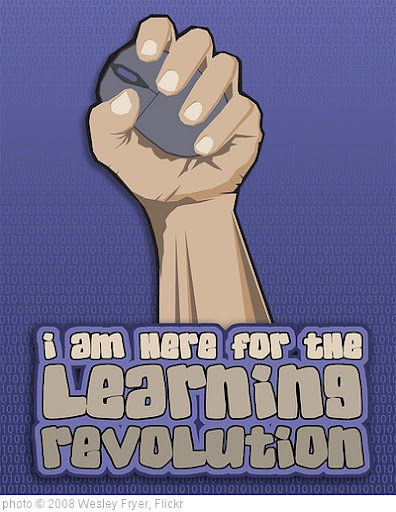Kuhlthaus’ “Learning as a Process”chapter was an important reading for me professionally.
I articulated in a recent post “What sort of library?” the aspects of the learning environment I was striving for – and then I read this chapter! The learning environment I am aiming for is constructivist, where the learning is active and dynamic.
It was enlightening and exciting to read and understand the theories explained by Kuhlthau in this chapter. I had lots of “a-ha” moments and “so that’s why!” and “I’ve seen that too” thoughts.
I will scaffold my thoughts and responses using a Visible Thinking routine called “Connect, Extend, Challenge”:
| CONNECT: | How are the ideas and information presented CONNECTED to what you already knew? |
- learning is active and dynamic
- students are “constructing their own personal worlds”
- students construct their own knowledge from the information they collect
- information seeking to broaden their understanding of the world
- thinking and reflecting go hand in hand with learning by doing -> higher order thinking skills and metacognitive thinking. Visible thinking routines can be used to scaffold student thinking and reflection.
- the idea that the “Problem and solution stand out completely at the same time” (Dewey quoted in Kuhlthau, 2004, p.16). Often we can see the solution to a problem at the very same time as the problem itself becomes clear, this is especially the case when researching – clarity and a sense of “a – ha” that’s the answer happens at exactly the time that you understand or “get” the problem that you were struggling with.
| EXTEND: | What new ideas did you get that EXTENDED or pushed your thinking in new directions? |
- to provide useful and appropriate scaffolding that will support students to take control of the process. Students need to be able to confidently be able to use routines and scaffolds that they know will help them organise their thinking.
- knowing how to learn – empowering and enabling students to have the responsibility = skills, strategies and processes
- working towards deep understanding and being able to transfer it to other situations. In the rush of the classroom we have to have strong convictions to give over the time to support and promote learning experiences that contribute to deep understanding. It can be done, and very rewarding when it is done.
| CHALLENGE: | What is still CHALLENGING or confusing for you to get your mind around? What questions, wonderings or puzzles do you now have? |
- Making inferences – jumping from the known and beyond the given information is the aim of learning and what the students I teach find very difficult to do. I’m not sure if it lack of opportunity to do this, lack of scaffolding or something else? Is it because they haven’t gone through the entire phases of reflective thinking – maybe they are stuck on conceptualizing the problem and are therefore unable to make the jump to tentative interpretation/ hypothesis making.
